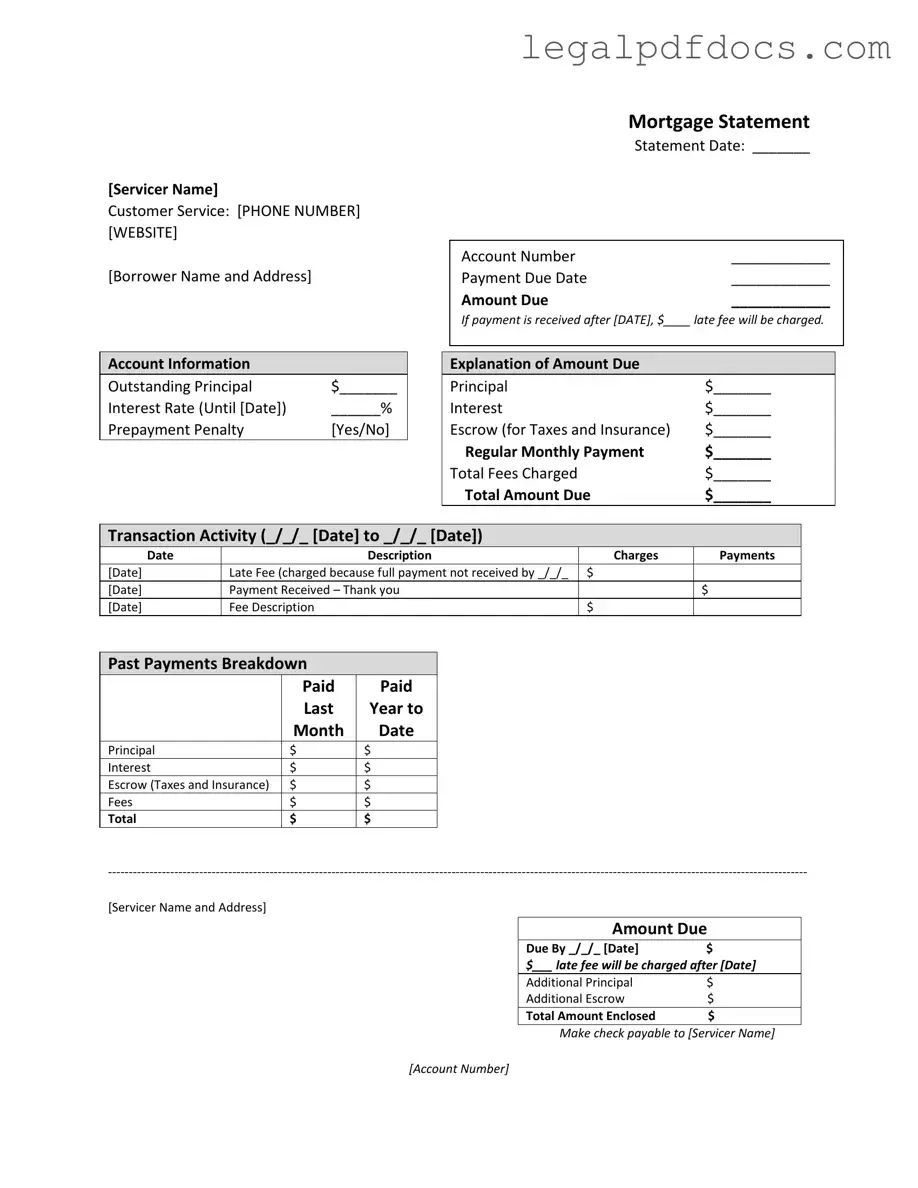The Mortgage Statement form serves as a crucial document for homeowners, providing a comprehensive overview of their mortgage account. It begins with essential contact information, including the servicer's name, customer service phone number, and website, ensuring borrowers have access to support when needed. The statement highlights key details such as the borrower’s name and address, the statement date, account number, and payment due date, all of which are vital for tracking payment schedules. Additionally, the form outlines the amount due and specifies any late fees that may be incurred if payments are not made on time. A section dedicated to account information reveals the outstanding principal, interest rate, and whether a prepayment penalty applies. This transparency is further enhanced by a breakdown of the amount due, including principal, interest, and escrow for taxes and insurance. Transaction activity is meticulously documented, showcasing a history of charges and payments over a specified period. Importantly, the form also addresses potential issues, such as delinquency notices and the consequences of late payments, while offering guidance for those experiencing financial difficulties. Through this structured format, the Mortgage Statement not only keeps borrowers informed but also emphasizes the importance of timely payments and financial responsibility.
